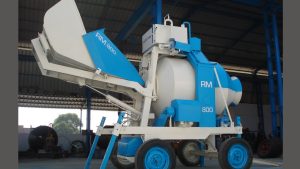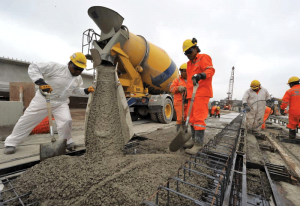Table of Contents
In this article, we will discuss concrete batching plants.
1. Introduction
Batching plant is a machine for the preparation of concrete by using various ingredients. A concrete batching plant also known as a batch plant or batching plant or a concrete plant, is equipment that mixes with various ingredients to prepare concrete containing water, air, fly ash, cement, aggregate (rocks, gravel, etc.), admixtures, silica fume, slag, and sand.
Batching of concrete could be done by both weight batching and volume batching.
2. Objective of Concrete Plant
The objective of batching are as follows:
a. Better quality concrete is produced.
b. Elimination of storage space for basic materials on site.
c. Ending the procurement/recruitment of plant and machinery.
d. Wastage of basic materials is avoided.

3. Types of Concrete Batching Plant
a. Dry Concrete Batching Plant
It is also known as a transit Mix Plant. The transit mix plant prepares to utilize manual or digital measures to aggregate and weight of the cement.
Water can be weighed separately, after weighing the fabric is flowed into a transit mixer, which is conveyed to the site. All materials are mixed during transportation to the construction site.
Water is added either to the location or throughout transportation, relying on the situation of the plant or site.

b. Wet Concrete Batching Plant
It is also known as a central mix plant. The central mix needs all the ingredients mixed together with water, the materials are blended in a mixer placed in a central area within the plant.
After the mixing process, the concrete flows into the transporting truck which transports it to the location. The vehicle should be transported fast so that the concrete does not get hardening.

c. Stationary Concrete Batching Plant
It is also known as a Stable concrete batching plant. Stable concrete batching plants are uniform and placed far away from the construction site.
Concrete is transferred to the construction site with the help of a truck; steady concrete batching plants are simple to establish, they are bigger in dimension than cellular concrete batching plants.
They are successful and prepare high-quality concrete & care must be done that the truck takes concrete to the location at the required time.
Otherwise, the concrete will start to get hardening, because of this the concrete can be set properly.
Stationary concrete batching plants are utilized for industrial projects with large spans and large demands for concrete.

| Read Also: Ready Mixed Concrete |
d. Mobile Concrete Batching Plant
Sometimes the stationary concrete plant is placed at a distance and the cost of transporting the concrete will be high, therefore it becomes more expensive.
In such cases, mobile concrete plants are more popular with physical storage, weighing, mixing, and discharging models.
After establishing the plant, the contractor can change concrete manufacturing according to the job requirement.
After the construction is over, this plant is transferred to various sites.
By utilizing mobile concrete batching plants within the case of stationary plants, late in the transport of vans could be neglected, however, this concrete plant has low effectiveness and capability.
If the material is not weighed correctly, the concrete won’t get the specified strength, and the durability of the structure decreases.
For small-scale projects, manual batching could be done.

4. Application of Concrete Plants
a. Ready Mix
A ready mix concrete plant is placed in the city and concrete is transferred to the site by a concrete truck mixer.
Ready-mixed concrete plants are needed for the durability, reliability, safety, and environmental protection of concrete plant systems.

b. Precast Applications
Precast concrete is a hunk of concrete that is prepared in a homogeneous process in the manufacturing plant.
With cast-in-place concrete, precast concrete can be prepared in batches and cured.
The precast concrete batching plants have a safe construction environment, low prices, and high-quality materials.
It is utilized in transportation, construction, water conservation, and various fields.

5. Advantages of Concrete Plants
The advantages of batching plant are as follows:
a. A centralized concrete batching plant can serve a large space.
b. The plants are situated in areas for industrial use and supply trucks can serve residential districts or inside cities.
c. Better quality concrete is produced.
d. Elimination of storage space for basic materials on site.
e. Elimination of hiring of plant and machinery.
f. The wastage of basic materials is avoided.
g. Workers associated with the production of concrete are eliminated.
h. The time required is greatly reduced.
i. Noise and dust pollution on the site is reduced.
6. Disadvantages of Concrete Plants
The disadvantages of batching plant are as follows:
a. Materials from the central plant and mixing start at a particular plant, so the transportation time is critical over longer distances.
b. The entry road and site entries can’t be able to transport a greater load of ready-mix trucks.
c. The time between mixing and curing of the concrete is 210 minutes of batching so, the time is limited to transport.
| Read Also: Best Cement in India |

